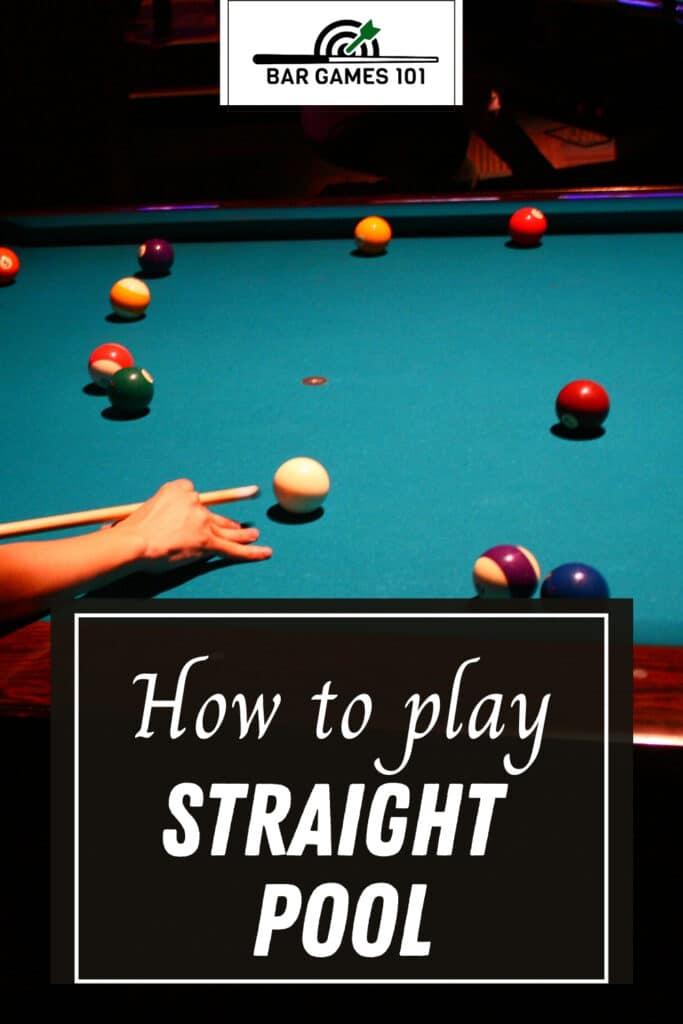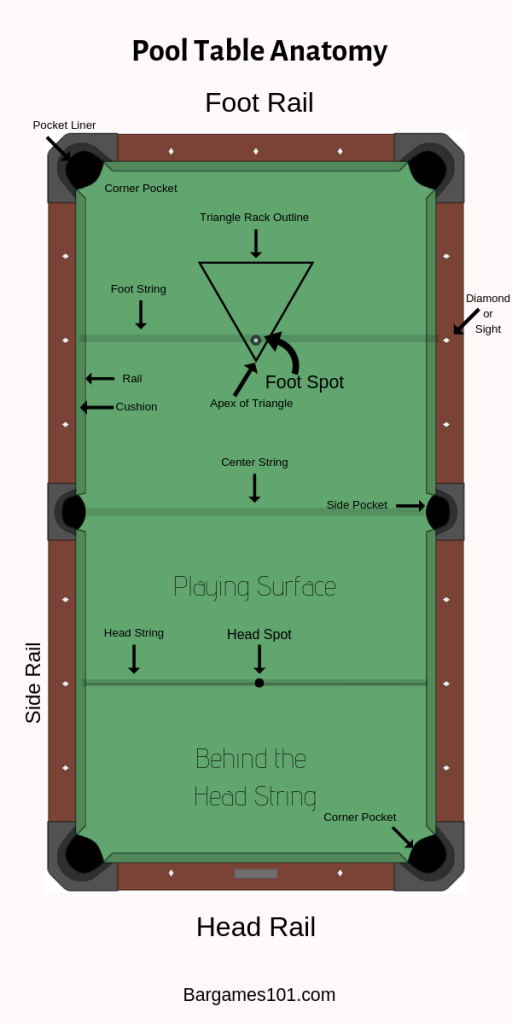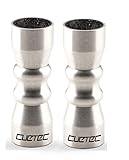In his book “The New Illustrated Encyclopedia of Billiards“, Mike Shamos wrote that many believe straight pool (also known as 14.1 Continuous) to be the purest form of pocket billiards.
Straight pool was adopted as America’s first official tournament game in 1912, experienced a huge resurgence with the release of the movie “The Hustler”, and remained the barroom and home game of choice until the 1980s, when eight and nine-ball took over with the advent of coin-operated tables and with pool becoming a televised sport.
Here are the rules of the game, and some general information about the feel of straight-pool, a good game to learn if you’re tiring of eight-ball and nine-ball and looking to improve the scope of your game.

Straight Pool is best played when no-one is waiting for next
Say you and your pool-playing colleague want to play for a couple of hours and have played enough race-to-five games in eight or nine-ball that it has become redundant.
With straight pool, you usually just play one game per outing against one opponent.
Like all pool games, it is best on the tables you pay for by the hour or at home tables due to the amount of racks required.
If forced to play on coin-operated tables, set aside $10 for the first time you play.
Related: How to Play Cutthroat Pool
The Rules
Straight pool is a multi-rack game that facilitates continuous scoring. You are not limited by solids or stripes, nor is the eight ball or nine ball of any more importance than the one or the fifteen.
You call the pocket and each pocketed ball counts as one point. The first one to the agreed upon goal is the winner.
If you have just a couple of hours and are an intermediate level player, setting the goal at 30 or 60 points is a good introduction to the game.
It usually takes an hour for mid-range players to play a game to 60 once they become familiar with the game.
Similar to the card games hearts or spades, you can pick a goal judging by the amount of time you have to play.
Tournament play for professionals in the current pool era are few and far between, and they typically play to 150.
Scratches are cue ball in hand behind the head string.
Similar to modern eight-ball or nine-ball, scratches are when the cue ball is pocketed.
It is also a scratch if the cue-ball doesn’t strike another ball, or after it strikes another ball and it does not strike a rail.
(Note for beginning pool players: If that doesn’t make sense, it is the rule that keeps one from just tapping the cue an inch to play safe.)
Rack and Repeat: The Break Up and Continuous Play
The most difficult part of straight pool is when you re-rack the balls to continue play. It is hardest part of the game to learn at first, but begins to make sense once you’ve been through it a few racks.
After all of the balls but one have been pocketed, you leave it and the cue where they lay and re-rack the other 14 balls, leaving the top spot of the triangle in the rack vacant.
(Note: Here’s a table that shows how to rack if the cue ball or object ball is where the rack normally goes.)
Then, with a good leave, the shooter that made the last shot pockets the remaining ball and breaks up the new rack simultaneously.
That is the “continuous” aspect of the game, allowing the shooter to continue his run through racks. Hence the name 14:1 continuous. Professionals normally play to 150, and can run over 100 (~7 re-racks) regularly when they are shooting well.
Willie Mosconi is lauded as the best straight pool player ever, and holds the record for most balls run continuously with 526 in an exhibition in 1954.
It is hard to breakup
How Straight Pool is good practice for your eight and nine-ball game
Straight Pool is good practice for learning and practicing the breakup shot; one of the most important shots in pool and the one that decides games more than any other single shot.
You employ a breakup shot when one or more of the balls you need to get to are tied up with other balls.
The hard part being that the breakup occurs in the same shot as you pocket a ball, allowing you to continue shooting. The breakup causes a ball to carom into balls that are bunched together in an effort to free them for future shots.
They are essential for longer “runs” and better “finishes” in both eight-ball and nine-ball.
Straight Pool is a great game for practicing breakup shots.
Related: How to Get Better at Pool: 9 Fundamental Practice Tips
Because of the continuous play, racks are not broken as open as they are in nine-ball and eight-ball, leaving for more balls tightened up together at the beginning of the rack.
You have to play breakups to open up the table, and in straight pool they are easier to manage because of less limitations on which ball you shoot after the break up.
(Note: It helps to know the parts of a pool table when learning to play straight pool. Here’s an overview of pool table anatomy if you need a refresher.)

Note: The opening Break was left out of this article because it is a very advanced shot that usually only occurs once per game. Since you have to call every shot, expert players play safe on the first break of the game. Don’t get caught up on learning the safe break. It can be best to scatter the balls with a hard break and sacrificing your turn the first few times playing straight pool.
The Feel of the Game
Though professional-level games do utilize more safety shots and can become lengthy four hour marathon matches, beginning and intermediate level play is more shot-making fun.
It is a game of makes, feeling like duck-hunting or shooting fish in a barrel with the freedom to shoot any ball. The table becomes easier to manage as more balls begin to be broken up and fall.
It is a strange feeling when your brain adjusts from focusing on solid and stripes or connecting the numerical dots of nine-ball and begins seeing all the balls equally.
The options are immense.
The first time you run 14 balls is extremely satisfying, and if you can pocket that last ball and break up the new rack and keep shooting, that feeling intensifies. It is like an extended rush, and easier to get into the zone than the shorter runs in eight or nine-ball.
Straight-pool also removes luck as a factor, whereas luck can dictate the winner even when playing a series of eight or nine-ball games or in league play. In straight pool, the better shooter that day will win.
Next time you’re out where you can pay by the hour, and not engaged in league play or the ever-popular “winner’s keep the table and challenger’s call next” dive-bar pool, or better yet at a home table, and are interested in just playing one game against one player and are looking for something new that is the oldest of pocket-pool games, try Straight Pool.



You are incorrect. A scratch or foul in straight pool is never ball in hand as in 8 or 9 ball. It is ball in hand only behind the head string. There is never a non-restrictive ball in hand in straight pool.
Hey Tim – thanks for the clarification. Duly noted and updated.